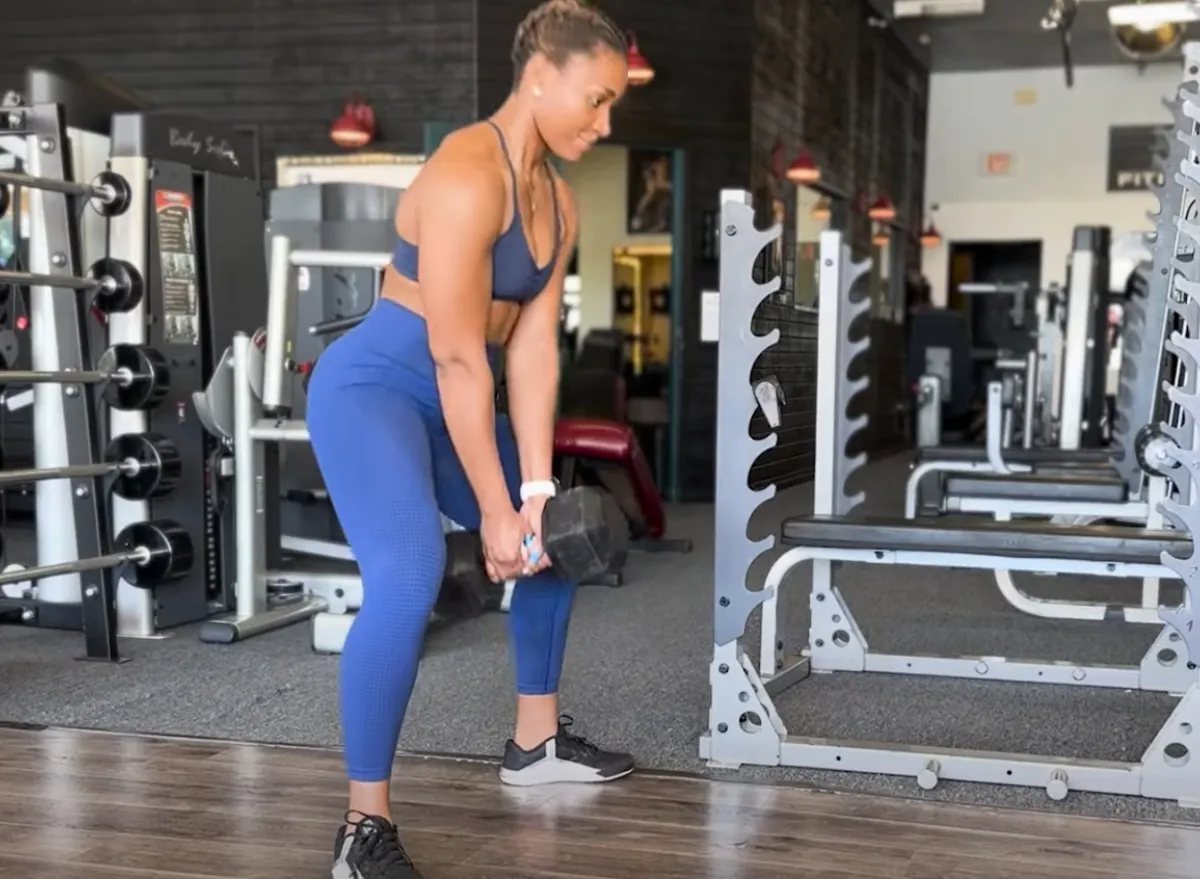5 Dumbbell Exercises for a Strong & Sculpted Back
Getting shredded is a key component of a fit physique that's totally ready for the spring and summer shirtless season. Achieving a lean, muscular upper body requires you hit the muscles in your upper body with weight. This is especially important for the back muscles, which often get neglected in favor of chest exercises. To get you going in the right direction, we've put together five of the best dumbbell exercises for your back that'll help you achieve a shredded upper body.
Well-developed back muscles give your torso a thicker, stronger appearance for men as well as the classic V-taper look. For women, back exercises give definition and tone to your mid and upper back, making them important components of a great upper body workout program for men or women.
In this article, gear up for the top five dumbbell exercises for your back and a shredded upper body. Perform each exercise for eight to 12 repetitions using a weight that feels heavy for that repetition count. Rest for one minute between each set, and perform three sets of each exercise, twice per week.
Grab your dumbbells, and keep reading to learn more. And next, don't miss 5 Exercise Habits That Are Destroying Your Body After 50.
Dumbbell Single-Arm Bent-Over Row
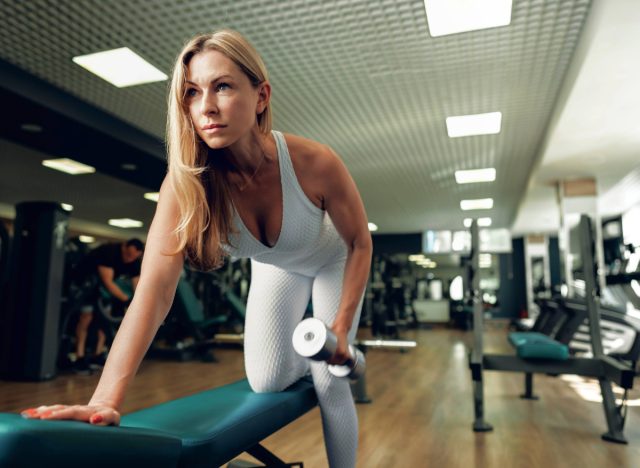
The dumbbell single-arm bent-over row is an exercise that hits your lats, rhomboids, traps, and posterior deltoids for a comprehensive upper-body muscle pump.
To perform single-arm bent-over rows, begin with a dumbbell in one hand and a bench or box about knee-thigh height in front of you. Hingle forward, and place one hand on the bench with the dumbbell hand hanging freely. Row the dumbbell upward, bringing your elbow toward the ceiling. Stop the movement when your upper arm is in line with your torso. Lower the dumbbell to the starting position. Repeat for target repetitions.
Dumbbell Rear Delt Row
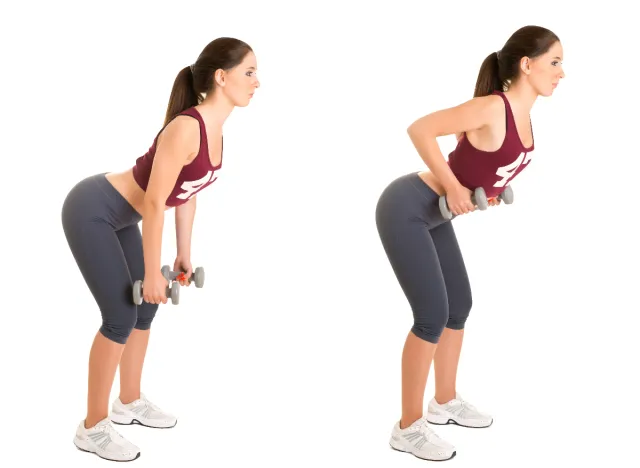
The rear deltoid are the muscles on the backside of your shoulder. They are key for getting a fully 3-D upper body look from the side and rear view. You will use lighter dumbbells compared to single-arm rows.
To perform dumbbell rear delt rows, begin with a dumbbell in each hand, held in an overhand grip, thumbs pointing inward toward each other. Hinge forward at the waist, and let the dumbbells hang. Slightly bend your elbow, and lock it into that position. Extend the dumbbells out to the side, maintaining your elbow bend. Lift until your arms are completely out to the sides and you feel the squeeze in your posterior shoulder area. Return to the starting position. Repeat for target repetitions.
Dumbbell Pullovers
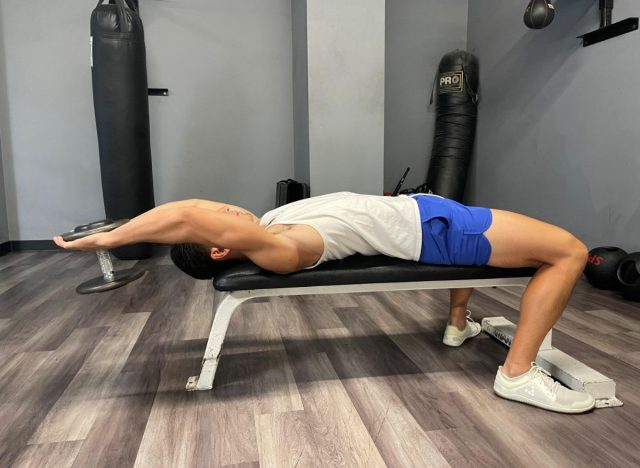
Dumbbell pullovers hit your lats, posterior deltoid, and multiple other upper body muscles.
To perform dumbbell pullovers, begin lying on your back on a bench with a dumbbell in each hand. Extend the dumbbells straight upward with a neutral grip (palms facing each other). Keep your arms straight, and lower the dumbbells in an arc position toward your head until they are parallel to the floor in an overhead position relative to your body. As you reach the end range position, feel the stretch in your chest and lats, and then reverse the motion and return to the starting position. Repeat for target repetitions.
Renegade Row
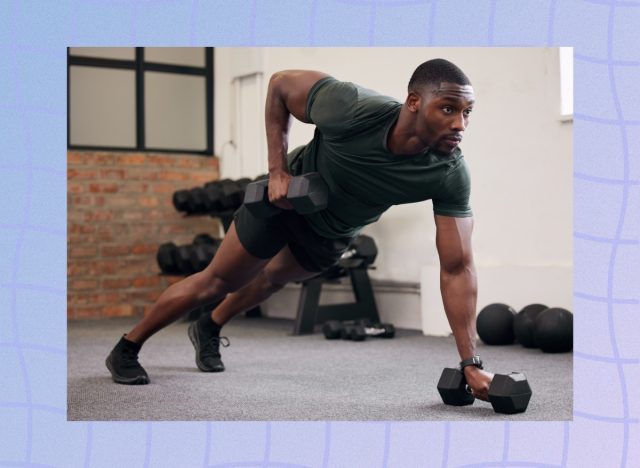
Renegade rows have you pulling from a plank position, increasing the core stability demands of the exercise.
To perform renegade rows, begin in a plank position with a hand on each dumbbell in a neutral position under your chest. Row one dumbbell upward by putting your weight on the other hand. Row until your upper arm is parallel to your torso. Lower to the starting position. Repeat on both sides for the target repetitions.
Chest-Supported Row
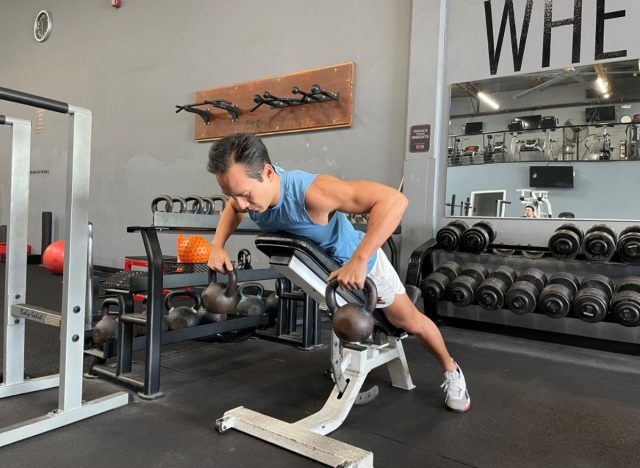
The chest-supported row hits your back dumbbells from a decline angle. You will need an incline bench or similar equipment.
To perform chest-supported rows, begin on an incline bench with your chest on the bench, your head looking over the top of the bench, and a dumbbell in each hand. Row the dumbbells upward until your upper arms are parallel to your torso. Return to the starting position. Repeat for target repetitions.
